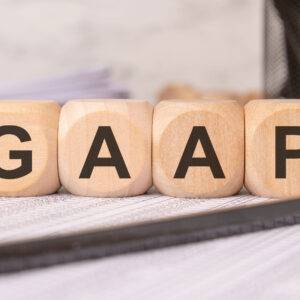ACCOUNTING BRIEF
Your home for the latest in financial reporting and auditing
FASB Updates Accounting Standards for Leases

On Wednesday, February 15, 2023, the Financial Accounting Standards Board (FASB) approved an update which will solve two major issues.
The two topics are related to common control lease arrangements and involve terms and conditions to be considered in a lease and accounting for leasehold improvements. These issues came up during post-implementation with feedback primarily from private companies. While these are technically not yet an update, the Board has advised the staff to draft a final for a vote, and it is expected to pass.
Terms and Conditions
Let’s take a look at these issues. First, we have terms and conditions to be considered.
Topic 842 requires entities to determine the existence of a lease based on the “legally enforceable terms and conditions of the arrangement.” This applies to related parties, including those under common control. This is important because it determines whether or not a lease exists. In other words, do you have to capitalize it?
Under 840, the determining concept for determining a lease was “economic substance.” Under 842, the determining concept for determining a lease is “legal enforceability.” For a common control arrangement, determining legally enforceable terms can be difficult, even if the terms are in writing. Common owners can often amend the terms at will and they can also choose not to enforce certain terms. Thus, the common control poses issues related to what is actually legally enforceable.
These arrangements are often not negotiated at arm’s-length and thus, they do not align with other arrangements. In addition, the arrangements may be unwritten or lack sufficient detail. For instance, renewal options may not be addressed. Due to these factors, private companies were afraid that a legal opinion would be required to determine whether or not a lease existed. Of course, this could create an undue burden.
The Practical Expedient
For this reason, the Board created a practical expedient. Before we get to that, let’s see who is affected.
This practical expedient will be available to private companies and most not-for-profit entities with arrangements under common control. It will NOT be allowed for public business entities, not-for-profit conduit bond obligors, or employee benefits plans that file with the SEC. It will also not apply to other related party arrangements which are not common control.
The board decided to provide a practical expedient which could be applied on an arrangement-by-arrangement basis. Simply put, an entity may use the written terms and conditions of a common control arrangement to determine whether a lease exists and the classification. If no written terms exist, then the expedient may NOT be used and an entity must determine the legally enforceable terms and conditions.
Transition
If you adopt the practical expedient in conjunction with the adoption of 842, then you must use the same transition method elected for 842. Otherwise, you may adopt either prospectively to all arrangements that commence after the adoption of the standard or retrospectively to the beginning of the earliest period presented.
Effective Date
This will be effective for all entities with fiscal years beginning after December 15, 2023, including interim periods within. Early adoption is allowed.
Accounting for Leasehold Improvements Associated with Common Control Leases
Leasehold improvements are improvements made by the lessee to the underlying leased asset
and are recognized on the lessee’s balance sheet only when a lease exists. Topic 842 requires these to be amortized over the shorter of the useful life of the improvements or the lease term.
Many common control lease arrangements have a short term and a term of one year is not uncommon. A concern was that under the new guidance, improvements would be required to be amortized over a much shorter period than their economic life, which would not result in a faithful representation.
The board felt that leasehold improvements with common control leases are economically different from other arrangements not under common control. For example, improvements are often made at the direction of the common owners.
The Amendment
This amendment would apply to ALL lessees who are in a lease under a common control arrangement where the lessee is the owner of the leasehold improvements, including public entities.
For all leases under common control, leasehold improvements will be amortized over the useful life of the improvement to the common control group as long as the lessee controls the use of the underlying asset through a lease. If the lessor obtained the underlying asset through a lease with another party not under common control, the amortization period may not exceed the term with the lessor’s lease with the other entity.
When the lessee no longer controls the use of the underlying asset, the residual amount of the improvements will be accounted for as a transfer between common entities through an adjustment to equity or to net assets for NFPs. In addition, the impairment guidance will remain in place.
Transition
If you adopt the amendment in conjunction with the adoption of 842, then you may use the same transition method elected for 842 or one of the options below.
For others, you may apply any of the following:
- Prospectively to all new improvements after the first date of application
- Prospectively to all new and existing improvements recognized after the first date of application
Retrospectively to the beginning of the first period of adoption of 842 for improvements existing at that date.
This is effective for all entities for fiscal years beginning after December 15, 2023, including interim periods, and early adoption is allowed.
If you need any help with leases or simply need some engaging and entertaining A&A CPE on a variety of topics, please check out my numerous webcasts, or come and see me at a live event this year.
-
Self-Study
Are You Independent?
$29.00 – $49.00 Select options This product has multiple variants. The options may be chosen on the product page -
Self-Study
Excel Tips to Boost Your Productivity
$29.00 – $49.00 Select options This product has multiple variants. The options may be chosen on the product page -
Self-Study
GAAP Hot Topics – What You Need to Know
$384.00 – $424.00 Select options This product has multiple variants. The options may be chosen on the product page -
Self-Study
The Risk of Abuse in Accounting Estimates: GAAP Insights and Audit Strategies
$58.00 – $78.00 Select options This product has multiple variants. The options may be chosen on the product page







